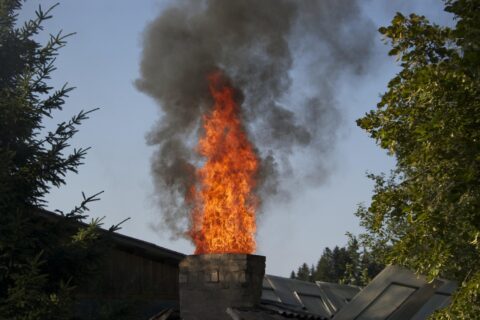5 Things to Not Burn in Your Fireplace
Treat Your Chimney Right! Know What Shouldn’t Be Burned in Your Fireplace
To keep your chimney functioning safely and efficiently, it’s important to treat it well. Burning anything other than seasoned firewood in your indoor fireplace can create a fire hazard, release toxic chemicals, or damage your fireplace. We here at ChimneyTek want you to be able to enjoy your fireplace during those cold Baltimore winters for years to come. That is why we suggest never burn any of the following things in your fireplace:
1. Paper Products
Many people use paper to get their fire started, because it ignites much easier than wood. The problem is, it ignites too easily, which can cause sudden large and out of control flames. These flames can quickly grow too large to be contained by your fireplace.
In addition, paper that has been bleached, painted, dyed or coated in wax can release chemicals you would rather not be breathing in. Wrapping paper is one of the worst culprits when it comes to creating toxic fumes when burned. Cardboard should also be avoided for the same reason, due to the glues and inks used in its manufacturing.
2. Plastic
Plastic is one of the worst things you can burn in your fireplace, and is sure to fill your home with toxic gases. Burning a completely synthetic material such as plastic is also harmful to the environment. If you’ve ever smelled burnt plastic, it should be clear why you don’t want your home filled with those fumes.
3. Pretreated Wood
Using your fireplace to get rid of scrap wood may sound like a good idea, but it isn’t if that wood has been treated with any chemicals. The burning of paint, stain, varnish, glue, or the chemicals used to pressure treat wood causes those hazardous chemicals to be released into the air. This includes wood products such as plywood, particle board, pressboard, and fiberboard. All of these can release compounds that are harmful to humans, pets, and the environment.
4. Liquid Fire Accelerants
Never use liquid fire starters in your indoor fireplace such as gasoline, kerosene, or lighter fluid. These accelerants can cause your fire to burn out of control and at unsafe temperatures. Not only will they fill up the room with dangerous fumes, they can cause a serious fire hazard. If you need help getting your fire going, only use fire starters that are designed for indoor use.
5. Driftwood
While gathering driftwood at the beach for your fireplace may seem like an economic solution, it is not recommended. Driftwood gathered at the sea contains corrosive salt, which creates harmful fumes when it burns, and corrodes your chimney. Even freshwater driftwood is not advised, due to the potential presence of silt and gravel.
How ChimneyTek Can Repair the Damage
It is important to keep your fireplace in top condition. Our Baltimore chimney experts at ChimneyTek can inspect your chimney for damage, and sweep it out to remove any buildup of toxic debris. We can also restore your smoke chamber to ensure the fumes are being directed to your chimney, rather than into your home.
If you need assistance with finding the proper wood for your fireplace or have questions about how to repair the damage caused by improper fuels, contact our Baltimore chimney experts today.


